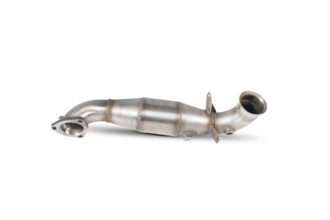In today’s competitive manufacturing landscape, reducing costs without compromising quality is a top priority. Fortunately, modern software solutions offer powerful tools to streamline operations, eliminate waste, and improve efficiency across the board. From production planning to inventory control, the right software can help manufacturers save money and stay ahead of the curve. Here are five key ways software can reduce manufacturing costs.
Optimize Production Planning and Scheduling
One of the most immediate ways software can cut costs is by improving how production is planned and scheduled. Advanced planning and scheduling (APS) systems allow manufacturers to allocate resources more efficiently, reduce downtime, and avoid bottlenecks. These tools use real-time data to forecast demand, adjust schedules dynamically, and ensure that machines and labor are used to their full potential. By minimizing idle time and overproduction, companies can significantly reduce operational expenses and improve delivery timelines.
Reduce Waste Through Data-Driven Quality Control
Quality issues can be expensive—both in terms of rework and damaged customer relationships. Software solutions that monitor production quality in real time help identify defects early, reducing the need for costly corrections later in the process. Statistical process control (SPC) tools, for example, analyze data from the production line to detect trends and anomalies. When issues are caught early, manufacturers can make quick adjustments before large quantities of defective products are produced.
Streamline Inventory Management
Carrying too much inventory ties up capital and increases storage costs, while too little can lead to stockouts and production delays. Inventory management software helps manufacturers strike the right balance by providing real-time visibility into stock levels, usage rates, and supplier lead times. Automated alerts and forecasting tools ensure that materials are ordered just in time, reducing excess inventory and minimizing waste. Some systems also integrate with barcode scanners and RFID technology to improve accuracy and reduce manual errors.
Enhance Collaboration Across Departments
Manufacturing involves multiple departments—engineering, procurement, production, and quality assurance—all working together. Software platforms that centralize data and streamline communication can eliminate silos and reduce costly miscommunications. For example, manufacturing product lifecycle management (PLM) software connects design, engineering, and production teams through a single source of truth. This ensures that everyone is working from the most up-to-date information, reducing errors and rework caused by outdated specs or misaligned processes.
Automate Routine Tasks and Reporting
Manual processes are not only time-consuming but also prone to human error. Software can automate a wide range of routine tasks—from generating work orders and tracking shipments to compiling compliance reports and analyzing performance metrics. Automation reduces labor costs, improves accuracy, and frees up staff to focus on higher-value activities. For example, automated reporting tools can provide real-time insights into key performance indicators (KPIs), helping managers make informed decisions quickly.
Conclusion
Software is no longer just a support tool; it’s a strategic asset for manufacturers looking to reduce costs and improve efficiency. From optimizing production schedules to enhancing collaboration and automating routine tasks, the right software solutions can deliver measurable savings across every stage of the manufacturing process. By investing in modern tools and technologies, manufacturers can stay competitive, agile, and profitable in an ever-evolving industry.














